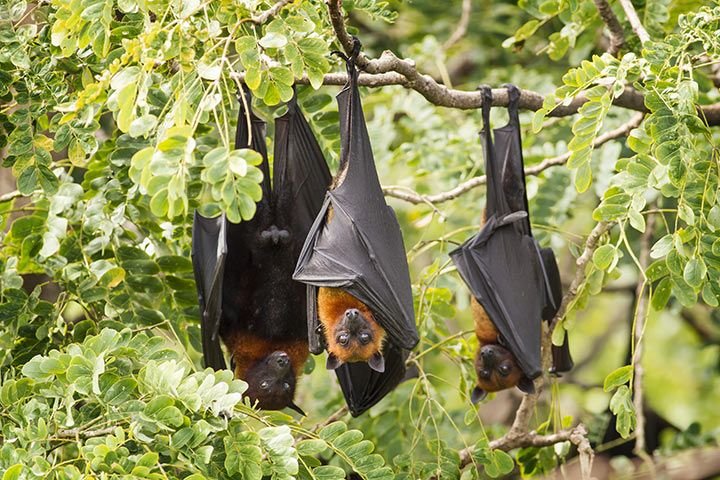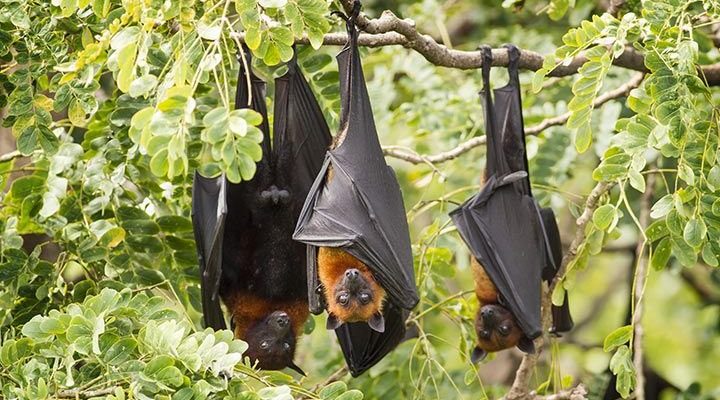
Imagine sipping coffee while watching a sunset in a tropical paradise. That’s the kind of vibe you get when thinking about fruit bat habitats. These bats play a crucial role in their ecosystems by pollinating flowers and dispersing seeds. So, understanding where they live helps us appreciate the importance of these furry winged mammals in maintaining healthy environments. Let’s dive into the world of fruit bats and explore their habitats and distribution!
What Are Fruit Bats?
Before we talk about where fruit bats live, it’s good to know a little about them. Fruit bats are large bats that belong to the family Pteropodidae. They have long wingspans that can reach up to 6 feet! These bats primarily feed on fruits, nectar, and flowers, which is why they’re sometimes called flying foxes. They’re known for their keen sense of smell and excellent eyesight, which help them locate food.
Another interesting tidbit: fruit bats are primarily nocturnal, meaning they’re active at night. However, unlike many other bat species, they don’t use echolocation to navigate. Instead, they rely on their strong vision and sense of smell. Imagine wandering through a fruit orchard at night with an excellent ability to find ripe mangoes or bananas—pretty impressive, right?
Geographical Distribution of Fruit Bats
Fruit bats are found in tropical and subtropical regions around the world, particularly in Africa, Asia, Australia, and many Pacific islands. You might be surprised to know that they thrive in diverse environments, from rainforests to coastal mangroves. Each species of fruit bat has adapted to its specific habitat, making them a versatile group.
For instance, the Indian flying fox can be found in dense forests across the Indian subcontinent, while the Black flying fox is native to eastern Australia. This wide distribution means that fruit bats play similar ecological roles in different parts of the globe, serving as essential agents of pollination and seed dispersal in various ecosystems.
Preferred Habitats of Fruit Bats
So, what makes a habitat ideal for fruit bats? Generally, they prefer warm areas with plenty of food options. Here’s a breakdown of their preferred habitats:
- Tropical Rainforests: These vibrant ecosystems are bursting with fruit-bearing trees, making them a top choice for many fruit bat species. The thick canopy provides shelter and roosting spots.
- Wetlands and Mangroves: Coastal areas with mangrove forests are also perfect habitats. They offer a rich source of food, primarily from flowering plants and fruits.
- Savannas and Woodlands: Some fruit bats can adapt to more open landscapes, such as savannas. Here, they can find fruit trees scattered throughout, allowing them to forage over larger distances.
Here’s the thing: the availability of food throughout the year is crucial for these bats. In regions where fruits are seasonal, fruit bats may migrate to find more consistent food sources.
Climate and Environmental Factors
The climate plays a significant role in where fruit bats can thrive. Being creatures of the tropics, they prefer warm temperatures and relative humidity. Cold weather can be particularly hard on these bats since they rely on fruit availability.
In tropical regions, wet or dry seasons can affect food supply. Heavy rains can lead to an abundance of fruits, while drought can severely limit their food sources. You might wonder how they cope with these changes. Well, many species have adapted to migrate seasonally, following the flowering of specific trees. This migration helps ensure they have access to food and suitable roosting environments year-round.
Human Impact on Fruit Bat Habitats
Sadly, human activities threaten fruit bats and their habitats. Deforestation is a major issue, as it destroys the trees that provide food and shelter. Urbanization also plays a role, as cities expand into natural areas, pushing bats away from their traditional homes.
Additionally, hunting and poaching for bushmeat or traditional medicine can significantly impact local populations. Some regions even view fruit bats as pests, leading to harmful measures to eliminate them. This is concerning because, as pollinators and seed dispersers, fruit bats are crucial for maintaining healthy ecosystems.
Here’s where you come in: supporting conservation efforts and responsible land-use practices can help preserve these unique creatures and their habitats.
Conservation Efforts and Future Outlook
Given their important role in ecosystems, there are ongoing conservation efforts aimed at protecting fruit bats and their habitats. Organizations across the globe are working to raise awareness about the ecological benefits of these bats. Many are advocating for habitat preservation through sustainable forestry and land use.
In addition to habitat protection, education plays a vital role. Teaching communities about the importance of fruit bats can change perceptions. By highlighting their role in fruit production, we can foster coexistence between humans and bats.
Honestly, it’s a tough road ahead, but with continued effort, we can help ensure that fruit bats remain a part of our ecosystems for generations to come.
Understanding where fruit bats live is more than just a geographic exploration; it’s about recognizing their crucial role in our ecosystems. From tropical rainforests to savannas, these fascinating creatures thrive in a variety of habitats, adapting to their surroundings and playing a vital part in pollination and seed dispersal.
As we face challenges like deforestation and climate change, it’s essential to support conservation efforts. By respecting their habitats and advocating for their protection, we can ensure that fruit bats continue to enjoy their unique places in the world and contribute to the health of our planet’s ecosystems. So next time you think of these remarkable bats, remember that they’re not just flying through the night—they’re helping nature thrive in ways we often overlook.

